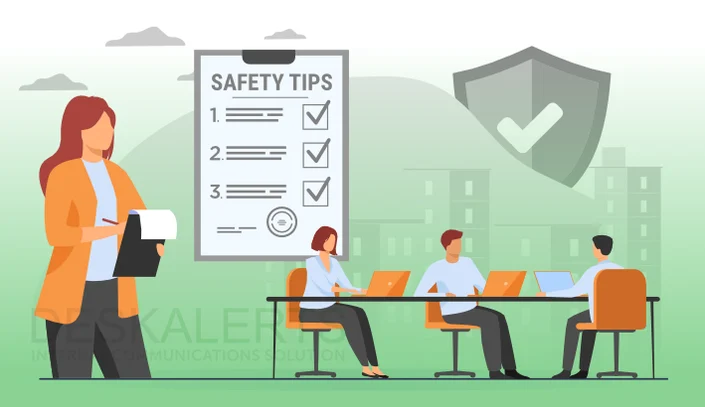Safety at work is crucial, protecting everyone in the company. It’s not just about complying with regulations; it’s about fostering a culture where everyone’s well-being is a top priority. Workplace accidents can have devastating consequences, affecting not only the individuals involved but also their families, colleagues, and the organization as a whole.
Employer Responsibilities
Develop a Comprehensive Safety Program
Every workplace needs a solid safety program because no one wants to be injured at work. Start by identifying potential hazards. Then, create policies to address them. Make sure these policies are clear and easy to understand. Update them regularly. Safety isn’t static. It evolves.
Provide Proper Training
Knowledge is power, especially in safety. Train all employees on safety procedures. Do it when they’re hired. Offer refresher courses regularly. Cover emergency protocols, equipment use, and hazard recognition. Make it engaging. Use hands-on demonstrations when possible.
Maintain a Safe Work Environment
A safe environment is a productive one. Keep work areas clean and organized. Ensure proper lighting. Fix hazards promptly. Don’t wait for accidents to happen. Be proactive.
Supply Appropriate Safety Equipment
The right tools make all the difference. Provide necessary personal protective equipment (PPE). This might include hard hats, safety goggles, or gloves. Ensure it’s readily available. Replace worn or damaged equipment promptly.
Encourage Open Communication
Create a culture of safety by encouraging employees to report hazards. Listen to their concerns, and then act on their suggestions. When workers feel heard, they’re more likely to stay vigilant.
Employee Responsibilities
Follow Safety Procedures
Rules exist for a reason. Follow them. Always. Even when it seems inconvenient, cutting corners can lead to accidents. It’s not worth the risk.
Use Protective Equipment Properly
Wear your PPE, and use it correctly. Hard hats aren’t fashion accessories. Safety goggles protect your eyes, not your forehead. If you’re unsure how to use something, ask because your safety is worth it.
Stay Alert and Aware
Pay attention to your surroundings and watch for potential hazards. Don’t let familiarity breed complacency. A momentary lapse in attention can have serious consequences.
Report Hazards and Incidents
See something unsafe? Say something. Report it immediately. This includes near-misses, as they’re valuable learning opportunities. Your observations could prevent a future accident.
Participate in Safety Training
Attend all safety training sessions. Pay attention. Ask questions. The more you know, the safer you’ll be. Take it seriously. It could save your life or a coworker’s.
Creating a Safety Culture
Lead by Example
Safety starts at the top. Managers should model safe behaviors. When leaders prioritize safety, employees follow suit. Actions speak louder than words.
Recognize Safe Practices
Celebrate safety successes. Reward employees who consistently follow safety procedures. Positive reinforcement works wonders. It motivates everyone to stay vigilant.
Regular Safety Meetings
Hold frequent safety meetings. Discuss recent incidents or near-misses. Share best practices. Keep the conversations open and honest. Make safety a team effort.
Emergency Preparedness
Develop Emergency Plans
Hope for the best, prepare for the worst. Have clear emergency procedures in place. Cover various scenarios: fires, natural disasters, medical emergencies. Make sure everyone knows their role.
Conduct Regular Drills
Practice makes perfect. Run emergency drills regularly. They help identify weaknesses in your plans. They also build muscle memory. In a real emergency, people will know what to do instinctively.
Safety at work is a shared responsibility, with employers tasked with providing a safe environment and proper training. Employees must follow procedures and stay alert. Remember, safety isn’t just a set of rules. It’s a mindset. Embrace it. Your life and the lives of your coworkers depend on it.

